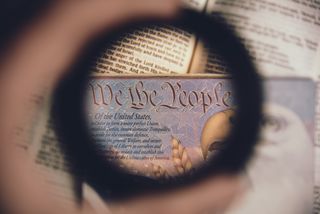Bias
Implicit Bias Within the Criminal Justice System
Can debiasing techniques help in lessening subconscious cultural stereotypes?
Posted November 21, 2018 Reviewed by Devon Frye
“Implicit bias presents unique challenges to effective law enforcement, because it can alter where investigators and prosecutors look for evidence and how they analyze it without their awareness or ability to compensate.” —Sally Q. Yates, Former U.S. Deputy Attorney General
According to the Kirwan Institute for the Study of Race and Ethnicity, implicit bias, which is also known as implicit social cognition, refers to the attitudes or stereotypes that can influence our understanding, actions, and decisions in an unconscious manner. These biases can be both favorable and unfavorable.
Since these biases are involuntarily initiated, the individual is, therefore, unaware and does not have intentional control, as these biases reside deep in an individual’s subconscious. Unlike known biases, which most individuals conceal for the purposes of social and/or political correctness, implicit biases are not accessible through self-reflection.
The implicit biases that we harbor deep within our subconscious govern the feelings and attitudes that we hold of others based predominantly on personal characteristics such as one’s race, ethnicity, age, and even appearance. Implicit biases are thought to develop from a culmination of lifetime exposure to both direct and indirect messages garnered from our personal experiences with those around us, including the news media.
The bad news—sort of—is that everyone has them, even though they might not align with our outward beliefs. This means that implicit biases, particularly racial biases, exist within our law enforcement officers, court personnel, and corrections employees, and such biases can have a profound negative influence on our real-world behaviors. The good news is that despite the complexity in genuinely understanding the psychological inner-workings of the human brain, the implicit biases that we have deep within our subconscious can be unlearned through a gradual process associated with debiasing techniques.
Debiasing
Debiasing refers to a wide variety of techniques, methods, and interventions that are designed to eliminate or lessen potential errors, distortions, and other mistakes in an individual’s thinking, judgment, or decision-making. These techniques are often placed into three general categories.
- Cognitive: Involves changes in the ways in which the individual conceptualizes a problem.
- Motivational: Involves changes in the ways in which incentives or punishments are allocated to the individual’s decision-making abilities.
- Technological: Involves changes in the ways in which computers and other advancements in technology can be utilized to assist us in problem-solving.

Implicit Bias in the Criminal Justice System
Surprisingly, very little has been published on implicit bias and its influence on criminal justice professionals’ subconscious perceptions of others and how such biases could lead us to target certain individuals based on their race, ethnicity, age, or physical appearance.
In likely one of the most widely cited studies on this topic, Correll and colleagues concluded that when police officers and civilians were confronted with making a split-second decision to shoot black or white suspects in an interactive video, both police officers and community members were quicker to shoot black people with guns compared to white people with guns, and they took longer when deciding against shooting the unarmed black suspects than the unarmed white suspects. (It should be noted that some of the suspects were holding a gun, whereas others were holding random objects, such as a cell phone or wallet.) This was true regardless of whether the officer or civilian pulling the trigger was white or black.
Now, as a researcher, I know not to rely on a single study before coming to a conclusion, but a number of additional studies concur with Correll and colleagues’ findings, which suggests that our attitudes and behaviors towards others are often driven by our subconscious thoughts. It is thought that these implicit biases stem from our evolutionary proclivity to be cautious of others who are unfamiliar or different from us. The biases are often reinforced by culturally established stereotypes. Since implicit biases exist within our subconscious, they are especially difficult to control and can have dire consequences for criminal justice professionals tasked with enforcing the law, sentencing, and supervising individuals in prison and within the community.

Acknowledging that this societal issue warrants further attention, the U.S. Department of Justice launched the National Initiative for Building Community Trust and Justice, joined by the National Network for Safer Communities, Yale Law School, the University of California in Los Angeles (UCLA), and the Urban Institute, to strengthen relationships between minority communities and the criminal justice system. The purpose of these programs is to address inequities within the criminal justice system, particularly racial inequities.
For instance, black men are significantly more likely to be stopped and questioned by the police and subsequently arrested, and far more likely to receive a harsher sentence in comparison to white men. This is also true for black women, who are four times more likely than white women to be sentenced to prison and for a longer term. Research also supports the fact that black men are twice as likely to be sentenced to death for capital crimes in comparison to white males.
However, as noted earlier, these biases can essentially be unlearned, since the neuroscience findings to date, although still in their relative infancy, suggest that with the right training and professional help, we can reprogram our unconscious biases.




